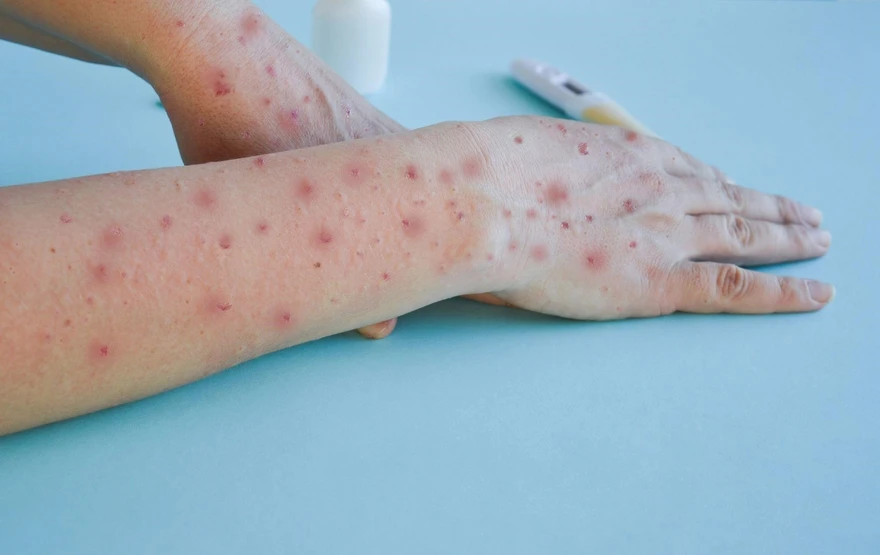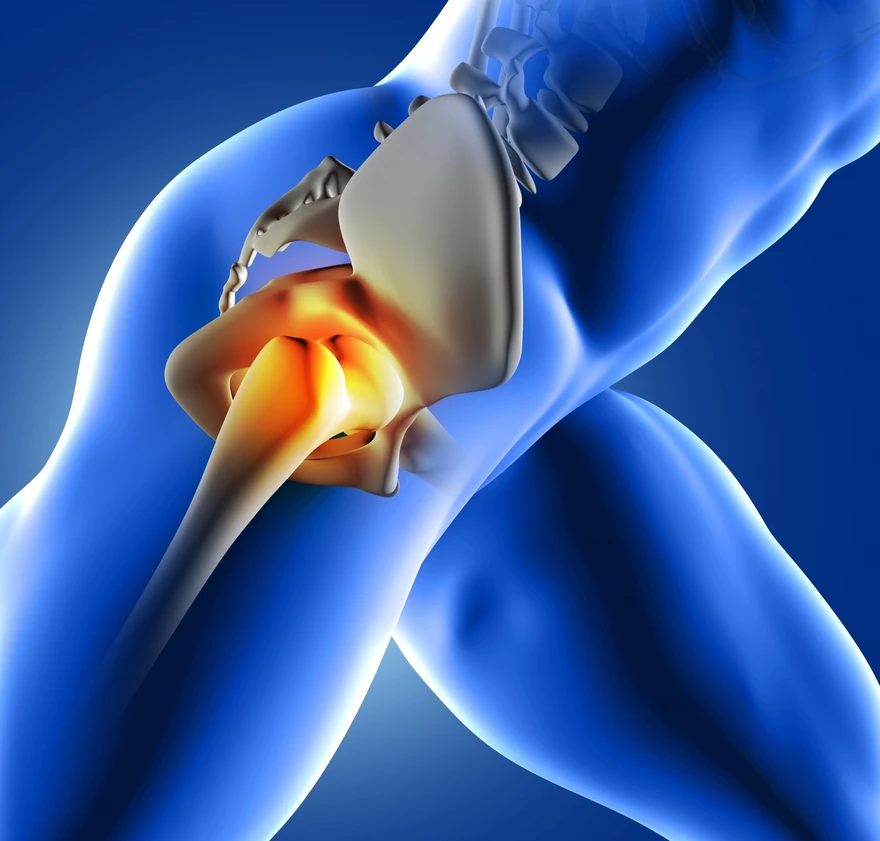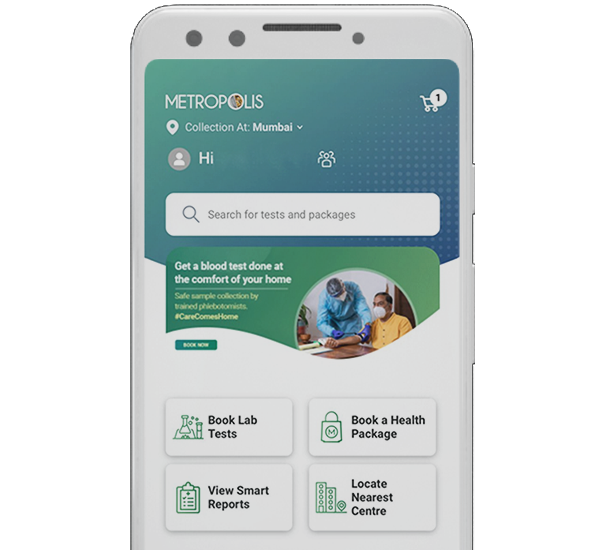Latest Blogs
Understanding Semen Analysis: Procedure, Result Interpretation, and Implications
What is a semen analysis? A semen analysis is a laboratory test that evaluates the quality and the amount of sperm. It is a crucial part of the evaluation for male infertility. The semen analysis test procedure involves the collection of a semen sample, usually through masturbation, and examine it under the microscope and through various chemical tests. The semen analysis purpose usually provides for the measurement of different key parameters, including the count of the spermatozoa, motility (movement), morphology (shape), volume, pH and the presence of white blood cells or other cells in the semen. What is Semen? Semen, also known as seminal fluid, is a body fluid secreted by the male reproductive organ. It plays a vital role in human reproduction. Sperm consists of spermatozoa (commonly known as sperm) and seminal plasma. The sperm are produced in the testes and stored in the epididymis, while the seminal plasma is produced by several glands, including the seminal vesicles, prostate gland, and bulbourethral glands. Semen is ejaculated during sexual climax, a process known as ejaculation. The primary function of semen is to deliver sperm to the female reproductive tract. Once you come to the female reproductive system, the sperm should go through the cervix and the uterus to reach the fallopian tube where eggs can occur. When is a semen analysis performed? A semen analysis might be suggested in any of the following situations: If you've been trying to conceive with your partner for over a year without success As part of routine fertility testing or to verify the success of vasectomy To investigate potential male fertility problems or suspected genetic issues To diagnose conditions like infections or hormonal imbalances How does a semen analysis work? A semen analysis test procedure designed to evaluate the health and viability of a man's sperm and playing an essential role in diagnosing male fertility problems. The semen analysis test procedure begins with the collection of a semen sample, typically through masturbation after 2 to 7 days of abstinence. The sample must be delivered to the laboratory promptly within one hour to ensure accuracy. Once the sample is received, it is liquefied at room temperature for about 20-30 minutes. The sample is then examined under microscope to evaluate several important parameters such as: sperm count, motility (movement), and morphology (shape). Additional tests are performed to measure the volume, pH, and white blood cells or other substances present in the semen. The semen analysis normal range for these parameters, as established by the World Health Organization (WHO), includes a sperm concentration of at least 15 million sperm per millilitre. What does a Sperm analysis include? A semen analysis includes a thorough examination of several key parameters to assess male fertility. During a semen analysis, the semen sample is analysed for sperm count, which measures the concentration of sperm in the semen. The semen analysis also evaluates sperm motility, determining the percentage of moving sperm and their movement quality. Sperm morphology is another crucial aspect of semen analysis, which examines the shape and structure of the sperm. Additionally, a semen analysis measures the volume of the semen, ensuring it falls within the normal range. Sperm pH is tested during semen analysis to check for imbalances that may affect sperm health. The semen analysis may also detect the presence of white blood cells or other cells, indicating possible infections or other health issues. What should I expect before a semen analysis? If you're scheduled for a semen analysis, here are some key things to keep in mind: Avoid sexual activity or masturbation for 2-5 days before the test, but not for more than two weeks, as it could result in less active sperm. Limit alcohol intake before your sperm analysis. Inform your doctor about any medications or herbal supplements you're taking, as they can affect the results of the sperm analysis. You will likely need to provide more than one sample, given that semen samples from the same man can vary. You may even be asked for two to three samples over 3 months. Can your wife or partner help with a sperm sample? Yes, if a man is uncomfortable giving a sample at the clinic through masturbating, semen samples can be collected at home using a special condom obtained from the healthcare provider. However, special utmost care must be taken to ensure that the sperm sample is not tampered in any way. How can I check my sperm count at home? A home test kit can help you measure your sperm count. These kits use a smartphone app or other digital tool to privately assess your sperm count. But keep in mind that these tests only measure sperm count, not other parameters like motility and morphology. What to expect after the semen analysis? After the semen analysis, some men might experience feelings of anxiety while awaiting results. It is important to remember that lab technicians are skilled in handling these samples and ensuring accurate results. When will I know the results of a semen analysis? The turnaround time for semen analysis results varies depending on the lab. Generally, results are available within a few days to a week. What do results look like for post-vasectomy semen analysis? For post-vasectomy semen analysis, successful surgery is indicated by the absence of sperm in the semen. If sperm is detected, further tests may be required. What do results look like for male fertility testing? When a couple faces difficulty in conceiving, one of the initial tests recommended for the male partner is semen analysis. This test examines different factors of the semen, such as: Semen Volume: A volume of 1.5 to 5 millilitres is considered normal Sperm Count: The typical range is 15 million to over 200 million sperm per millilitre Morphology: This refers to the shape and structure of sperm. More than 4% of sperm having a normal shape is considered healthy. Motility: This assesses the movement and swimming capability of sperm. Over 40% of sperm showing good motility is seen as positive. What is the normal range for a sperm analysis? The World Health Organization (WHO) provides reference values that serve as the semen analysis normal range. Semen volume: 1.5 ml or more Sperm concentration: 15 million sperm/ml or more Total sperm number: 39 million sperm per ejaculate or more Sperm motility (movement): 40% or more moving Sperm morphology (form and structure): 4% or more with normal appearance What do abnormal results mean for my ability to help a person conceive? Abnormal semen analysis results may indicate issues with your ability to help someone get pregnant. If the semen analysis shows a low sperm count, poor motility or abnormal morphology, the chance of fertilisation may decrease. Semen analysis showing low sperm volume or pH imbalance can also affect sperm viability. These abnormal semen analysis results can help identify underlying problems that may require medical intervention or lifestyle changes. If semen analysis shows abnormalities, a health care provider should be consulted for further evaluation and treatment. Is sperm analysis covered by insurance? Insurance coverage for semen analysis varies depending on your provider and plan. It's advisable to verify with your insurance company before scheduling a test. Conclusion Understanding semen analysis can seem overwhelming, particularly when dealing with fertility issues. However, armed with the right information and professional medical advice, you can navigate this process confidently. If you are considering undergoing a semen analysis and looking for reliable diagnostic services, consider Metropolis Healthcare. Known for their accurate pathology testing services, their expert team handles sample collection at home. Test results are conveniently shared online via email or the Metropolis TruHealth app. Remember that prioritising your health is within reach with accurate knowledge and quality healthcare.
Bedsores (Pressure Ulcers): Causes, Stages, Treatment, and Prevention Strategies
What are bedsores? Bedsores are injuries to the skin and underlying tissues resulting from prolonged pressure on the skin. They can be an unfortunate and common occurrence among people who are bedridden or generally immobile, such as those in wheelchairs. Bedsores usually develops on the skin which is covering the bony areas of the body such as the heels, ankles, hips, tailbone, and shoulder blades. What are other names for bedsores? Bedsores are also known as pressure sores or pressure ulcers. How common are bedsores? Bedsores are relatively common among immobile or bedridden people, especially in hospitals and nursing homes. They are a serious health problem for patients in all kinds of settings, from large hospitals to long-term care facilities and residential care facilities. Bedsores are associated with lengthy and costly hospital stays. What parts of your body do Bedsores affect? Bedsores usually occur on the back, buttocks, hips, heels, elbows, and other areas that bear weight or are subject to pressure during immobility. These areas are more prone to bedsores due to reduced blood flow and prolonged pressure, which can lead to tissue damage. Correct body positioning, regular movement and good skin care are key to preventing bedsores in vulnerable people. What causes Bedsores? Bedsores causes primarily occur due to prolonged pressure on the skin which leads to a decreased blood supply to the area. This lack of oxygen and nutrients can cause skin cells to die, leading to bedsores. Some factors that contribute to bedsore causes include: Constant Pressure: Pressure applied on your skin and makes the blood circulation difficult to that area. Due to which your skin can’t get enough oxygen or nutrients. This weakens the skin and causes cells to die. Friction: Rubbing against clothing or bedding can damage sensitive skin Shear: Skin that stretches or pulls due to movement can increase pressure sore risk Who is at risk for Bedsores? People who are bedridden, wheelchair-bound, or have limited mobility are more prone to bedsores. Additionally, older adults, individuals with sensory or neurological impairments, and those with compromised circulation are more susceptible to bedsores. What health conditions increase your risk of Bedsores? Health conditions such as paralysis, diabetes, vascular disease, and spinal cord injury increase the risk of bedsores. In addition, poor nutrition, dehydration, and prolonged pressure on the skin and tissues further increase the likelihood of developing these pressure ulcers or bedsores. What are the signs of Bedsores? Signs may include changes in the colour or texture of the skin, swelling or areas of tenderness. It's important to regularly check for these signs, especially in bony areas of the body. Early detection is crucial in effective bedsores treatment. What are the stages of Bedsores? Depending on their severity, bedsores can range from stage I (mild) to stage IV (severe). Understanding these stages of bedsores can help in identifying their progress and hence in determining appropriate bedsores treatment plans: Stage I: This is the mild stage. Here, bedsores only affect the top layer of skin due to which the skin appears red and warm, with discomfort or itching Stage II: This happens when the wound goes deeper below the surface of your skin. Because of this, the skin tears and may look like a blister or abrasion Stage III: These sores have penetrated in the second layer of skin into the fat tissue, and extends into the tissue beneath the skin, forming a small crater. Stage IV: These sores are the most serious. Some can be so deep that they affect muscles, ligaments and bones. In addition to these stages of bedsores, sometimes it may be unstageable or involve any suspected deep tissue injury. What are the complications of Bedsores? If left untreated, bedsores can cause some serious complications. These may include skin infections, sepsis, and amputations due to severe infection or even cancer in extremely protracted cases. It also increases the risk of life-threatening bacterial infections, such as cellulitis and sepsis. What are the signs of an infected Bedsore? An infected bedsore may present as swelling, warmth around the wound site, foul odour or pus. If a bedsore shows signs of infection, a prompt medical attention is needed. How are Bedsores diagnosed? The diagnosis process for bedsores begins with a thorough physical examination. Your doctor may ask you questions like when the sores appear or whether they are painful to determine if you have a bedsore and if so, what stage it's in. If there is any suspicion of an infection, further tests like blood tests, biopsies, or imaging might be conducted. What are nonsurgical treatments for Bedsores? Nonsurgical treatments for bedsores focus on relieving pressure, promoting healing, and preventing infection. These bedsores treatments includes regularly changing the body position to relieve pressure on the area, using special cushions or mattresses to distribute weight evenly, and keeping the skin clean and dry. Dressings and topical treatments like antibiotics or medicated bedsores cream may be used to manage wounds and prevent infections. Additionally, improving nutrition with a balanced diet rich in protein and vitamins supports tissue repair. Physical therapy helps maintain mobility and circulation, crucial for bedsore prevention. What medications treat Bedsores? In case of pain from bedsores, nonsteroidal anti-inflammatory drugs could be used for relief. These include medications like ibuprofen or naproxen sodium. Using them before changing positions or cleaning the wounds can help manage the discomfort. In case of infected bedsores, antibiotics might be required. What are surgical treatments for Bedsores? In more serious cases of bedsores, particularly in stage IV, immediate medical attention is required, which might lead to surgical intervention. One common surgical treatment for bedsores is skin grafting. Which involves transplanting skin or muscle from another part of your body to cover the sore. How can you prevent Bedsores? Bedsores prevention involves proactive measures to reduce pressure on vulnerable areas and maintain skin health. Changing your body position regularly and using cushions or specialised mattresses can help reduce pressure points, which is very important in bedsores prevention. Keeping your skin clean and moisturised prevents dryness and irritation which can contribute to skin breakdown. Encouraging movement and exercises to improve circulation and muscle tone is essential, especially for immobile individuals. Monitoring nutrition and hydration levels supports skin integrity and overall health, aiding in bedsores prevention. Regular assessments by healthcare providers can help identifying early signs of skin damage, and enabling timely interventions such as dressing changes or adjustments in positioning to prevent bedsores from developing or worsening. What is the outlook for someone with Bedsores? Most people can recover from bedsores completely with timely detection and treatment. However, those who are at a risk should be vigilant to prevent serious recurrence. When to see a doctor? You should consult your healthcare provider if you notice signs of bedsores – like red or discoloured skin that doesn't lighten when touched – especially if you're housebound or wheelchair-bound. What’s the role of a nutritious diet when you have Bedsores? A nutritious diet boosts the overall health and aids in faster healing of bedsores. Include foods rich in proteins, vitamins A and C, and the minerals iron and zinc in your diet. Conclusion Understanding bedsores, their causes, and treatment options is pivotal to preventing and managing them effectively. Regular position changes, good skin care, a nutritious diet, and professional medical advice are the crucial elements which aids in managing this health condition. Metropolis Healthcare offers a reliable range of diagnostic services, including at-home sample collection for various tests. The reports are conveniently shared online via email or the Metropolis TruHealth app. The expertise and patient-centric approach of Metropolis Healthcare empower patients to prioritise their health effectively.
Addressing Cellulite: Causes, Treatment, and Lifestyle Changes
What is Cellulite? Cellulite refers to the dimpled or puckered appearance of the skin when fat deposits push through the connective tissue beneath the surface. It typically appears on thighs, stomach and buttocks but can occur anywhere on the body. It's important to note that cellulite is not harmful or indicative of any underlying health problems, although some may find it aesthetically undesirable. What is the difference between Cellulite and Lipedema? Cellulite and lipedema are two distinct conditions. Cellulite symptoms include dimpled, lumpy skin, often on the thighs and buttocks, caused by fat pushing against connective tissue. Cellulite treatment focuses on improving skin texture through creams, massage, or laser therapy. Cellulite causes are typically linked to genetics, hormones, and lifestyle factors. Lipedema, on the other hand, is a chronic disorder which is characterised by the abnormal accumulation of fat, primarily in the legs and arms, leading to swelling and pain. Unlike cellulite, this medical condition requires specialized treatment, like compression therapy, manual lymphatic drainage, and in severe cases, liposuction. How common is Cellulite? Cellulite strikes without discrimination, affecting both men and women alike. However, it is observed more frequently in women. Studies suggests that 80% to 90% of women experience cellulite symptoms post-puberty, as compared to less than 10% of men. Although it's commonly associated with weight gain, even lean individuals can develop cellulite. How does Cellulite affect my body? Although cellulite does not affect your physical health, it does affect body image and self-esteem, which can be important to some people. If you have signs of cellulite, it's natural to be concerned about the appearance of your skin. What are the symptoms of Cellulite? Cellulite symptoms are primarily visual, with the skin displaying a dimpled or lumpy appearance often likened to the texture of an orange peel or cottage cheese. These symptoms may vary in severity, with medical experts classifying cellulite into four grades based on its visual characteristics: Grade 0: No visible cellulite Grade 1: Skin appears smooth when standing but shows mild dimpling when sitting Grade 2: Moderate dimpling visible both when standing and sitting Grade 3: A severe dimpling observed in both positions along with deep peaks and valleys on the skin surface What are the causes of Cellulite? Understanding the cellulite causes can be a bit complicated. The irregular appearance of cellulite is caused by the tightening of the fibrous bands that connect the skin to the underlying muscles, while the fat pushes up against the skin. However, the exact reasons for these changes are still not fully understood. Current theories about cellulite causes suggest that genetic factors, hormonal changes (particularly increased estrogen levels), and differences in skin and muscle structure may play a role. Contrary to a popular belief, cellulite is not contagious and cannot be spread through physical contact. How is Cellulite diagnosed? Diagnosis of cellulite is usually simple and based primarily on a physical examination of the affected skin and a discussion of your medical history. Doctors can usually confirm this with just a visual inspection without any specific test. Is it possible to get rid of Cellulite? Despite the numerous cellulite treatments available in the market, completely getting rid of cellulite remains a challenge. It is very important to set realistic expectations and focus on managing and reducing cellulite rather than eliminating it completely. What gets rid of Cellulite? Your approach to cellulite treatment will depend upon numerous factors, including the severity of your symptoms and personal goals. Here are some potential options: Topical Creams: These often contain ingredients like caffeine that may help tighten your skin temporarily. Cellulaze or Cellfina: Both FDA-approved procedures are designed to treat the problems associated with the underlying structures that cause cellulite. Laser or Radiofrequency Treatments: These heat treatments stimulates collagen production and thus improve skin structure. Massage or Suction Treatments: Techniques such as Lipomassage aim to alter the fat distribution under your skin. While these treatments may reduce the appearance of cellulite temporarily, they don't eliminate it entirely. For more lasting results, lifestyle changes are often recommended alongside these cellulite treatments. Can exercise get rid of Cellulite? While exercises cannot "get rid" of cellulite, it can definitely help to reduce its visual impact by strengthening and toning the muscles present under cellulite-prone areas. Cardiovascular exercises combined with strength training can be particularly useful in cellulite management. What can’t I eat if I have Cellulite? Having a balanced diet plays a pivotal role in managing cellulite. Remember that foods high in fat, salt, and sugar may contribute to the development of cellulite by causing weight gain and fluid retention. Here are examples of foods that you might want to limit or avoid: Processed Foods: High in sodium and unhealthy fats, these can lead to weight gain Sugary Snacks and Drinks: These can cause blood sugar spikes leading to fat accumulation. Refined Carbohydrates: White bread and pastries can rapidly convert into glucose in your body, promoting fat storage. Combining a balanced diet with regular exercise can help control weight and possibly improve the cellulite symptoms. What are the treatment and removal options for Cellulite? While there is no definitive cure for cellulite, numerous cellulite treatments show promise in reducing its appearance. Here are some potential treatments: Topical Treatments: Creams containing ingredients like retinol or caffeine may temporarily tighten the skin, making cellulite less noticeable. Massage: Regularly massaging the areas prone to cellulite can improve lymphatic drainage, potentially reducing the appearance of cellulite. Laser Treatment: Some therapies use radiofrequency, laser therapy, or ultrasound to break down fat and stimulate collagen production. Cellfina: This is a minimally invasive procedure which targets the connective bands causing cellulite, offering promising results that can last up to two years. Weight Loss: For overweight people, losing weight might help in reducing the appearance of cellulite. Remember that effectiveness varies between individuals and treatments. It's crucial to consult with a healthcare professional before starting any cellulite treatment. How soon after treatment will I start to see results? The timeline for seeing results from cellulite treatment varies depending on the type of treatment and individual factors. For instance, while topical creams might show temporary effects within a few weeks of regular use, procedures like laser treatments could require multiple sessions over several months for visible results. It's essential to have realistic expectations and understand that most treatments offer temporary improvement rather than a permanent solution for cellulite. How can I reduce my risk? Although it is not possible to completely prevent cellulite, certain lifestyle changes can help minimize its appearance: Maintain a healthy weight through balanced nutrition and regular physical activity. Stay hydrated to keep your connective tissues strong and elastic. Limit intake of processed foods, salt, sugar and fat. What can I expect if I have Cellulite? Having cellulite is more normal than you think! Most women experience it post-puberty due to hormonal changes and the way female bodies store fat. While it might make you self-conscious about your appearance, remember that it does not pose any health risks. When to see a doctor? While cellulite itself is harmless, if you're unhappy with its appearance or if it affects your self-esteem, you should consult a healthcare professional to discuss potential treatment options. Conclusion While cellulite might be a common concern for many, it's reassuring to know that there are several ways to manage its appearance and potentially improve the skin texture. At Metropolis Healthcare, we believe in empowering you with knowledge and solutions for better health outcomes. Our comprehensive health check-ups and reliable diagnostic services aim to provide personalised care right at your doorstep. Remember, taking charge of your health is always within reach with the right care and knowledge!
Unveiling the Surprising Health Benefits of Pistachio Nuts
What are Pistachios? Pistachios are small, green nuts encased in a hard, beige shell, known for their distinct, mild sweet flavor and a crunchy texture. Originating from the Middle East, pistachios are now enjoyed worldwide. They are a nutritious snack, rich in protein, fibre, healthy fats, and essential vitamins and minerals. Pistachios are often eaten on their own, added to desserts, or used in cooking for a delightful crunch. They also contain antioxidants and have been linked to various health benefits. Are Pistachios good for you? Yes, pistachios are good for you! They are rich in nutrients, pistachio benefits include heart health, weight management, and improved digestion. Pistachio nutrition boasts high levels of protein, fibre, healthy fats, vitamins, and minerals such as vitamin B6, potassium, and antioxidants. These nutrients support overall health, boost immunity, and help in managing cholesterol levels. Common pistachio uses include snacking, adding to salads, desserts, and savoury dishes, or even as a topping for yogurt and oatmeal. Their delicious taste and numerous health benefits make pistachios a valuable addition to a balanced diet. Nutritional value of Pistachios A single serving (49 kernels) of pistachios contains: Calories: 159 Protein: 5.72 grams Carbohydrates: 7.7 grams Fat: 12.85 grams Fibre: 3 grams These delicious seeds are cholesterol-free and rich in vitamins and minerals such as manganese, phosphorus, copper, vitamin B6, and thiamin. Moreover, pistachio nutrition contains more potassium than a large banana and as much fiber as a cup of cooked broccoli! Pistachio benefits Pistachios, often praised for their unique flavor and vibrant green color, it also offer numerous health benefits. These small but mighty nuts are packed with essential nutrients and compounds that contribute to overall well-being. Let's delve into the various benefits of pistachios, categorized by their specific health advantages. High in antioxidants Pistachios are rich in antioxidants, which are vital for combating oxidative stress and protecting cells from damage. They contain significant amounts of lutein and zeaxanthin, which are known to support eye health. Additionally, the antioxidants in pistachios, such as polyphenols and tocopherols, help reduce inflammation and lower the risk of chronic diseases like cancer and heart disease. Supports digestive health Pistachios are an excellent source of dietary fibre, which are crucial for maintaining the digestive health. A single serving of pistachios provides a substantial amount of fibre, aiding a regular bowel movement and preventing constipation. Fibre also supports the growth of beneficial gut bacteria, which play a significant role in overall digestive health and immunity. Low in calories yet high in protein Despite being a nut, pistachios are relatively low in calories compared to other nuts. They are also high in protein, making them an ideal snack for those looking to maintain or lose weight without sacrificing essential nutrients. The protein content in pistachios helps in muscle building, repair and maintenance, making them a great addition to a balanced diet. May protect heart health Pistachios have been shown to support heart health by lowering bad cholesterol (LDL) and raising good cholesterol (HDL). They contain healthy fats, including monounsaturated and polyunsaturated fats, which are beneficial for better cardiovascular health. Regular consumption of pistachios has been associated with lower blood pressure and reduced risk of heart disease, due to their nutrient-rich profile, including potassium, magnesium, and fibre. Good for eye health As mentioned earlier, pistachios are rich in lutein and zeaxanthin, two antioxidants that are essential for eye health. These compounds help protect the eyes from damage caused by blue light exposure and reduce the risk of age-related macular degeneration (AMD) and cataracts. Including pistachios in your diet can contribute to maintaining good vision and overall eye health. May aid weight loss Pistachios are an excellent choice for those looking to lose weight due to their low-calorie content and high levels of protein and fibre. The fibre and protein in pistachios help increase feelings of fullness, reducing overall calorie intake. Additionally, the act of shelling pistachios slows down consumption, allowing more time for the body to register fullness, further aiding in weight management. May help lower blood sugar Pistachios have a low glycemic index, meaning they do not cause significant spikes in blood sugar levels after consumption. They are rich in fibre, protein, and healthy fats, all of which contribute to better blood sugar control. Studies have shown that incorporating pistachios into a balanced diet can help lower blood sugar levels and improve insulin sensitivity, making them beneficial for individuals with diabetes or those at risk of developing the condition. Beneficial for gut health The dietary fibre in pistachios not only aids in digestion but also promotes a healthy gut microbiome. The fibre acts as a prebiotic, feeding the beneficial bacteria in the gut and promoting their growth. A healthy gut microbiome is essential for an overall health, influencing everything from digestion to immune function and even mental health. Regular consumption of pistachios can help to maintain a balanced and diverse gut microbiome. Reduce colon cancer risk The fiber and antioxidants in pistachios may help reduce the risk of colon cancer. Fiber helps promote regular bowel movements and reduces the residence time of potential carcinogens in the colon. In addition, the antioxidants in pistachios help protect cells from damage and inflammation, which are factors in the development of cancer. Adding pistachios to your diet is a delicious way to support colon health and possibly reduce your risk of cancer. May lower cholesterol and blood pressure The potassium and magnesium content present in pistachios helps regulate the blood pressure, supporting cardiovascular health. Studies have demonstrated that incorporating pistachios into a balanced diet can lead to significant improvements in both cholesterol levels and blood pressure. Risks of eating pistachios Despite of their many benefits, there can be some pistachio side effects. For instance, roasted pistachios often contain high sodium levels. Consuming too much sodium can increase the risk of high blood pressure, heart disease, and stroke. Pistachios also contain FODMAPs (fermentable oligosaccharides, disaccharides, monosaccharides, and polyols), which can cause discomfort in people with irritable bowel syndrome or fructan intolerance. Symptoms can range from bloating to nausea and abdominal pain. For people with nut allergies, consuming pistachios can trigger severe allergic reactions like itchy skin or throat, difficulty swallowing, or even anaphylaxis. Conclusion Unveiling the incredible health benefits of pistachios clearly highlights why they deserve to be part of our regular diet. From being antioxidant-rich to supporting digestive health and potentially assisting in weight loss – pistachio benefits are numerous! However, like all good things, they should be consumed in moderation and as part of a balanced diet. At Metropolis Healthcare, we believe that informed health decisions start with accurate information. Our team of qualified technicians is ready to assist with home visits for blood sample collection, which are processed at our advanced diagnostic labs. With a commitment to delivering reliable results and personalised care, we aim to empower you on your journey to prioritising health.
Understanding Aphasia: Types, Symptoms, Causes, and Rehabilitation Techniques
What is Aphasia? Aphasia is a communication disorder that affects an individual’s ability to understand or use language. It usually occurs after a stroke or a brain injury, causing difficulties with speaking, understanding spoken language, reading, and writing. Individuals with aphasia may face a difficulty in speaking coherently or understanding what others are saying. As a result, it can be challenging for them to articulate their thoughts or comprehend written or spoken language. Who does it affect? Aphasia affects men and women equally from all backgrounds and can develop at any age, but studies shows that aphasia is most commonly diagnosed in adults over 65 years of age, and stroke is more common in older adults. How common is Aphasia? Aphasia affects around 2 million people worldwide each year. It is relatively a common condition caused by stroke or brain injury. Awareness and access to rehabilitation services are essential to support survivors in India and around the world. What are the symptoms of aphasia? Aphasia symptoms vary depending on the type and severity of the condition. Common aphasia symptoms includes difficulty speaking, finding right words, and forming sentences. Individuals may also struggle understanding spoken or written language, leading to problems following conversations or reading texts. Writing and reading impairments are also common with some people who are unable to write coherently or understand written material. Other aphasia symptoms also includes substituting the incorrect words or creating nonsensical sentences. Fluency problems can cause speech to halt or become difficult to speak. Comprehension problems may cause individuals to misunderstand questions or instructions. Recognizing these aphasia symptoms is crucial for an early diagnosis and an effective treatment, enabling those affected to have better communication and quality of life. What are the types of Aphasia? Aphasia is a language disorder resulting from brain damage, typically due to a stroke, head injury, or other neurological conditions. Understanding the different aphasia types is crucial for accurate diagnosis and treatment. There are several aphasia types, each affecting language abilities in distinct ways. Broca’s Aphasia: Also known as non-fluent or expressive aphasia characterized by difficulty in producing speech. Individuals with Broca’s aphasia can understand the language relatively well but but struggle to speak or write. Their speech is often stuttered and strained, skipping small words like "is" or "the." Wernicke’s Aphasia: Known as fluent or receptive aphasia, this type affects the comprehension. Individuals with Wernicke’s aphasia can produce speech fluently but often with little meaning. They may use incorrect words or create nonsensical sentences, making their speech difficult to understand. Global Aphasia: As the most severe form of aphasia, which affects all aspects of language. Individuals with global aphasia have serious difficulties in speaking, understanding, reading and writing. This aphasia type is caused by a damage to language areas of the brain. Anomic Aphasia: People with an anomic aphasia have difficulty finding the right words, especially nouns and verbs, making their speech vague and circumlocutory. Despite this, their comprehension, reading and writing skills remain relatively intact. Primary Progressive Aphasia (PPA): Unlike other aphasia types, which are caused due to sudden brain injuries, PPA is a gradual degeneration of brain tissue affecting language. It starts with a subtle language problem that progressively gets worsen over time. Conduction Aphasia: This type involves a difficulty in repeating words or phrases. Individuals with conduction aphasia understand and produce speech fairly well but struggle with repetition and may have frequent speech errors. Transcortical Aphasia: This category includes transcortical motor aphasia (similar to Broca's aphasia, but with intact repetition), transcortical sensory aphasia (similar to Wernicke's aphasia, but with preserved repetition), and mixed transcortical aphasia (combination of the two with preserved repetition). Each of these aphasia types requires a therapeutic approaches to address any specific language deficits and help the individuals to improve their communication skills. Accurate diagnosis of the different aphasia types is essential for effective treatment planning. What causes Aphasia? Aphasia causes are linked to damage in the language-dominant hemisphere which is usually on the left side. This damage can be caused by: Stroke (most common cause) Head injury Brain Tumour or Infection Neurodegenerative diseases like Alzheimer's Disease or Dementia Understanding the cause of aphasia is crucial as it guides treatment and rehabilitation strategies. How to diagnose Aphasia? Diagnosing aphasia involves a comprehensive assessment done by a speech-language pathologist who uses various tests to evaluate an individual's ability to speak, understand, read and write. Additionally, medical imaging procedures like CT scans, MRIs, or Positron Emission Tomography can also be employed to visualise the brain and determine the site and extent of damage. What tests will be done to diagnose this condition? To confirm a diagnosis of aphasia and create a comprehensive aphasia treatment plan, healthcare providers may use: Speech and Language Tests: These help evaluate an individual's ability to speak, understand spoken language, read, and write. CT Scan: This imaging test provides detailed images of the brain, helping pinpoint areas of damage. MRI Scan: It offers comprehensive images of the brain’s internal structures. Positron Emission Tomography (PET): This test helps to evaluate brain function and identifies the areas where brain activity is reduced. How is Aphasia treated? The main goal of aphasia treatment is to improve the individual's ability to communicate effectively. The aphasia treatment approach usually involves: Speech-Language Therapy: A speech-language pathologist helps with exercises to improve language abilities and use alternative communication methods. Support Groups: These groups provides opportunities for social interaction and communication practices. Computer-Based Therapy Programmes: These can supplement traditional speech-language therapy. How to prevent Aphasia? Preventing aphasia aims to reduce the risk factors for stroke and other conditions that can lead to brain damage. This includes maintaining healthy lifestyle, effectively managing chronic diseases like diabetes and high blood pressure, avoiding tobacco and excessive alcohol consumption, and staying physically active. What is the outlook for people who have Aphasia? Living with aphasia can be difficult. However, many people are able to regain functional communication through therapy and rehabilitation techniques. With support from family, caregivers and therapists, recovery from aphasia can be greatly improved. Conclusion Understanding aphasia - its types, symptoms, causes and treatment options - is crucial for identifying it early on and commencing effective treatment. Despite the challenges presented by aphasia, individuals can lead fulfilling lives with the right therapeutic strategies and support systems. At Metropolis Healthcare, we understand the importance of early diagnosis and intervention. Our sophisticated diagnostic services offer accurate results that can guide your healthcare provider in formulating an effective treatment plan. We are committed to empowering patients in their health journey with reliable, timely, and patient-centric services. Remember, while aphasia may change the way you communicate, it doesn't define who you are. Support, patience, and understanding go a long way in navigating through life with aphasia.
Exploring Avascular Necrosis (Osteonecrosis): Symptoms Causes, and Treatment
What is avascular necrosis? Avascular necrosis (AVN), also known as osteonecrosis, is a condition where bone tissue dies due to a lack of blood supply. Without blood, the bone tissues break down and the bone can collapse. This condition often affects the ends of long bones such as the femur, leading to joint pain and potential arthritis. Avascular necrosis causes range from injury to certain medical conditions such as steroid use, excessive alcohol consumption, and blood disorders. Avascular necrosis symptoms include pain and limited range of motion. Early diagnosis and treatment are important to prevent serious joint damage and improve the results of drugs, treatments, or surgery. How common is avascular necrosis? In India, about 16,000 new cases of avascular necrosis (AVN) are recorded every year. Globally, it affects about 10,000 to 20,000 new cases per year. The prevalence is increasing due to the increase in risk factors such as the use of steroids and the consumption of alcohol. Where does avascular necrosis develop? Although avascular necrosis causes bone tissue problems in all joints, the hip is most commonly affected. Other joints that may develop avascular necrosis include: Ankles Jaw Knees Upper Arm (humerus) and shoulders What causes avascular necrosis? Avascular necrosis causes bone tissue to die due to insufficient blood supply. The most common avascular necrosis causes include traumatic injuries, such as fractures or dislocations, which can damage blood vessels. Non-traumatic avascular necrosis causes includes a prolonged use of high-dose steroids and excessive alcohol consumption, can cause a fatty deposits to build up in the blood vessels, restricting blood flow. Medical conditions like sickle cell disease, lupus, and blood clotting disorders also contribute to avascular necrosis. Additionally, certain treatments like radiation therapy and chemotherapy can also damage blood vessels, resulting avascular necrosis. Early diagnosis is essential to manage and prevent further bone damage. What bone fractures cause traumatic avascular necrosis? Traumatic avascular necrosis can occur following a hip bone fracture or joint dislocation. For example, about 20% of the individuals who dislocate their hips develop avascular necrosis. What medical conditions or problems cause nontraumatic avascular necrosis? Nontraumatic avascular necrosis is caused from diseases or medical conditions that obstructs blood flow to the bone tissue. These conditions includes osteoporosis, blood disorders such as sickle cell anemia, diabetes, cancer treatments such as radiation therapy, decompression sickness in divers, HIV, lupus, and organ transplants. What lifestyle activities increase the risk of developing avascular necrosis? Your lifestyle choices have a significant impact on the likelihood of developing avascular necrosis. High-risk behaviours include: Excessive consumption of alcohol Smoking Prolonged use of corticosteroids (like Prednisone) What are the symptoms of avascular necrosis? Symptoms of avascular necrosis are usually includes joint pain that worsens with weight-bearing activities and decreases with rest. The pain may be mild at first, but may develop into severe discomfort as the condition progresses. Other symptoms of avascular necrosis include limited exercise range, stiffness and joint collapse. The affected areas are hips, shoulders, knees and ankle joints. If left untreated, avascular necrosis will cause normal destruction and require a common replacement surgery. How is avascular necrosis diagnosed? Diagnosis for avascular necrosis involves multiple steps: Assessment of symptoms by a healthcare provider Physical examination X-rays to detect fractures and signs of arthritis Magnetic resonance imaging (MRI) These diagnostic tests help in capturing precise images showing any damage or changes in your bones. How do healthcare professionals treat avascular necrosis? Avascular necrosis treatment depends on the extent of damage to your bones. For smaller bones that don't bear weight, potential treatments include: Cold packs Heat Treatment Rest Nonsteroidal anti-inflammatory drugs (NSAIDs) Physical Therapy to ease joint tenderness and increase range of motion Using walking aids such as canes and crutches For more advanced forms of avascular necrosis, surgery is usually necessary. What is the treatment for more advanced forms of avascular necrosis? Advanced forms of avascular necrosis typically require surgical intervention. The surgical options commonly include: Core Decompression: Your surgeon drill small holes in the affected bones to improve blood flow. This procedure may be combined with injections or bone grafts to promote healing. Joint Replacement: Damaged joints are replaced with artificial joints. Hip and knee replacements have been shown to be 95% effective in relieving pain and restoring mobility in patients with avascular necrosis. How can I prevent avascular necrosis? While avascular necrosis causes cannot always be prevented, there are steps you can take to reduce your risk: Quit smoking Limit your alcohol intake Monitor your cholesterol levels If you are taking corticosteroids for a chronic condition, consult with your healthcare provider about reducing the doseage. Is there a cure for avascular necrosis? Avascular necrosis cannot be completely cured, but early intervention can slow its progression. Avascular necrosis treatments includes medications, lifestyle changes, physical therapy, and surgical options such as core decompression or joint replacement. Timely diagnosis and treatment are essential to maintain joint function and reduce pain. When to see a doctor? Visit a doctor for avascular necrosis if you have persistent joint pain, especially if it worsens with weight-bearing activities. Early diagnosis is crucial, so see a doctor if you notice stiffness, limited mobility, or unusual discomfort in your joints to prevent further damage. Conclusion Understanding avascular necrosis empowers you with the knowledge needed to make informed health decisions. While this condition can significantly impact one's quality of life, it is crucial to remember that early diagnosis and appropriate treatment can delay its progression. If you're noticing symptoms linked to avascular necrosis or you're at risk due to lifestyle factors or underlying health conditions, consider availing Metropolis Healthcare’s diagnostic services. Known for their accurate pathology testing and health check-up services, Metropolis' qualified technicians make at-home visits for blood sample collection ensuring comfort and convenience for patients.
Understanding Jock Itch: Causes, Symptoms, and Effective Remedies
What is Jock Itch? Jock itch or tinea cruris is a fungal skin infection that manifests as an itchy rash typically affecting the groin and inner thighs. Often compared to ringworm, this infection got its name because it is common among athletes and those who sweat excessively. What does Jock Itch look like? Jock itch or tinea cruris infection includes a rash that originates itself in the fold of the area of the groin, which extends down to the upper thigh and the buttocks. The center of the rash often clears as it expands further. You may also notice small blisters around the edge of the rash. The jock itch rash might appear red, brown, purple or grey depending on your skin color. Who does Jock Itch affect? While anyone can get jock itch, certain groups are more at risk: Males Teens and young adults Individuals who wear tight-fitting clothes People who sweat heavily Those with weakened immune systems Sufferers of athlete's feet Can women get Jock Itch? Yes, women can also get jock itch, although it is more common in men. How does Jock Itch affect my body? Jock itch, which is caused by fungal infection in the groin area, results in itching, redness, and a rash. It affects the skin in the groin, inner thighs, and around the buttocks causing discomfort and irritation. It rarely affects the genitals (penis, scrotum, vulva). Your skin may develop an itchy rash. Your skin may change color, crack, peel or flake. Sometimes tiny bumps or blisters may appear around the edges of the rash. However, proper hygiene, antifungal treatments, and avoiding tight clothing help manage and prevent recurrence of jock itch. What are the symptoms of Jock Itch? Jock itch symptoms includes an itching and a red, scaly rash in the groin area. This rash may spread to the inner thighs, buttocks, and genitals, causing discomfort and irritation. Jock itch symptoms can be alleviated by keeping the affected area clean and dry, and using antifungal creams. What causes Jock Itch? The primary jock itch causes is a fungus that thrives in the warm, moist areas of the body. The same microorganisms are often responsible for athlete's foot, highlighting the interdependence of these conditions. Infections that can cause jock itch can be spread through skin-to-skin contact or by using contaminated towels or clothing. Is Jock Itch contagious? Yes, jock itch or tinea cruris is contagious. As it can spread through direct skin-to-skin contact or by sharing towels, clothing, or sports equipment with an infected person. Avoiding contact and practicing good hygiene can help prevent the spread of jock itch. How does Jock Itch spread? Jock itch is spread through direct contact with an infected person or by sharing contaminated items such as towels, clothing or sports equipment. The condition thrives in hot, humid environments, making it common in athletes and people who sweat a lot. The fungi responsible for jock itch, such as dermatophytes such as Trichophyton rubrum, can survive on surfaces and fabrics facilitating their transmission. Avoiding shared objects, maintaining good personal hygiene, and wearing loose, breathable clothing helps prevent the itching from spreading and reduces the risk of recurrence. Prompt jock itch treatment with antifungal medications is essential to relieve jock itch symptoms and prevent further spread of jock itch causes. How is Jock Itch diagnosed? Doctors usually diagnose jock itch based on the appearance of the rash and its location. However, if required, they may also take skin scrapings from the infected area to examine under a microscope for definitive jock itch diagnosis. What tests will be done to diagnose Jock Itch? If your doctor needs to confirm a jock itch diagnosis, they might perform a test called a KOH exam. In this test, a sample of your skin cells are placed on a slide and treated with potassium hydroxide (KOH). This substance helps reveal fungal cells under a microscope. Will Jock Itch go away on its own? With proper treatment and self-care measures such as keeping the affected area dry and clean, jock itch usually clears up within 1 to 3 weeks. However, if the jock itch symptoms persist beyond this period or worsen, it is essential to consult a doctor. How is Jock Itch treated? Over-the-counter antifungal creams are often the first line of jock itch treatment. If these aren't effective, your doctor may prescribe stronger creams or oral medication. What is the fastest way to cure Jock Itch? Jock itch treatment generally involves over-the-counter antifungal creams or sprays that can help clear up the infection within 1-3 weeks. However, please note that not all cases of jock itch are alike. Some severe instances may require prescription-strength topical or oral antifungals prescribed by a healthcare provider. However, the thumb rule here is - if you are not noticing any improvement within a week of self-care and OTC treatment or if your jock itch symptoms persist after three weeks despite of a consistent treatment – it's time to consult a dermatologist or a medical professional. Can rubbing alcohol cure Jock Itch? Rubbing alcohol can help cure mild jock itch. It can also prevent or stop fungal growth on the surface of your skin. However, using rubbing alcohol on sensitive areas like the groin can cause intense burning and irritation. It can also dry out your skin excessively, leading to further itching and discomfort. For safe and effective jock itch treatment, it is best to rely on clinically proven antifungal creams or sprays while maintaining good personal hygiene. What are the home remedies for Jock Itch? In addition to rubbing alcohol, a few home remedies may help prevent or treat jock itch. Some essential oils can help in preventing bacterial growth. These include tea tree oil, bitter orange oil, peppermint oil, and eucalyptus oil. However, they cannot completely prevent fungal infections. Garlic contains a compound called ajoene. Ajoene can prevent or stop the growth of bacteria. However, like essential oils, it can completely prevent fungal infections. If you are allergic to essential oils or garlic, do not use them to treat itching. Remember, these remedies should complement, not replace, any prescribed jock itch treatment. Always consult a healthcare provider for persistent or severe jock itch symptoms. How do I manage my Jock Itch symptoms? Managing jock itch symptoms involves a combination of medication and lifestyle changes: Proper hygiene: Wash and dry the groin area regularly and thoroughly. Medication Adherence: Continuing to take prescribed medication even when symptoms improve. Choice of Clothing: Choosing loose clothing and underwear made of natural fibers such as cotton. How soon after treatment will I feel better? The time it takes to get relief from jock itch symptoms varies depending on the severity of the infection and how diligently you follow treatment instructions. Typically, jock itch symptoms improve within a few days of starting treatment in case of a mild jock itch. However, it may take 1 to 3 weeks for the infection to completely clear up. Remember that you should not stop taking the medicine before the prescribed period is over, even if you feel better. This ensures that the fungus is completely eliminated and reduces the risk of recurring jock itch. How can I reduce my risk? Reducing your risk of getting jock itch involves a few simple steps: Stay dry: Especially in the groin area. Always use a clean towel to dry yourself after showering or exercising. Wear Clean Clothes: Change your underwear daily or more often if you sweat a lot Don't Share Personal Items: This includes towels and clothing Control Athlete’s Foot: As it can spread to the groin area causing jock itch How can I prevent Jock Itch? In addition to reducing risks, here are some preventive measures for jock itch: Choose loose fitting clothes: Tight clothing can rub against your skin and make you more susceptible to jock itch Use antifungal powders: Especially if you're an athlete or sweat heavily Maintain good hygiene practices: Like washing hands regularly and avoiding shared public spaces like locker rooms and showers barefoot What can I expect if I have Jock Itch? Typically, jock itch causes a rash that begins in the groin crease and then gradually spreads to the upper thigh and buttocks. This rash may appear red, brown, purple or gray depending on the color of your skin and is often ring-shaped lined with small blisters. The center of the rash usually disappears as it spreads. The most noticeable symptom is itchiness, which can range from mild to severe. You may also notice scaly skin within these areas. When to see a doctor? If any discomfort persists despite self-care measures, or if the jock itch hasn't improved after a week of over-the-counter antifungal treatments, it's time to see a healthcare professional. If jock itch or tinea cruris infection has not cleared up after three weeks of treatment, or if you develop a fever or severe pain, seek medical attention immediately. Conclusion Understanding jock itch its causes, symptoms, and effective remedies can equip you with the knowledge needed to tackle this common skin infection. While it is often manageable with the help of over-the-counter treatments and good hygiene practices, consultations with healthcare professionals are essential for persistent or severe cases of jock itch. Always remember that accurate pathology testing is a key part of managing your health. Metropolis Healthcare, a leading chain of diagnostic labs across India, provides reliable services like at-home blood sample collection for your convenience. Prioritize your health today by exploring Metropolis top-tier diagnostic services.
 Home Visit
Home Visit Upload
Upload























 WhatsApp
WhatsApp